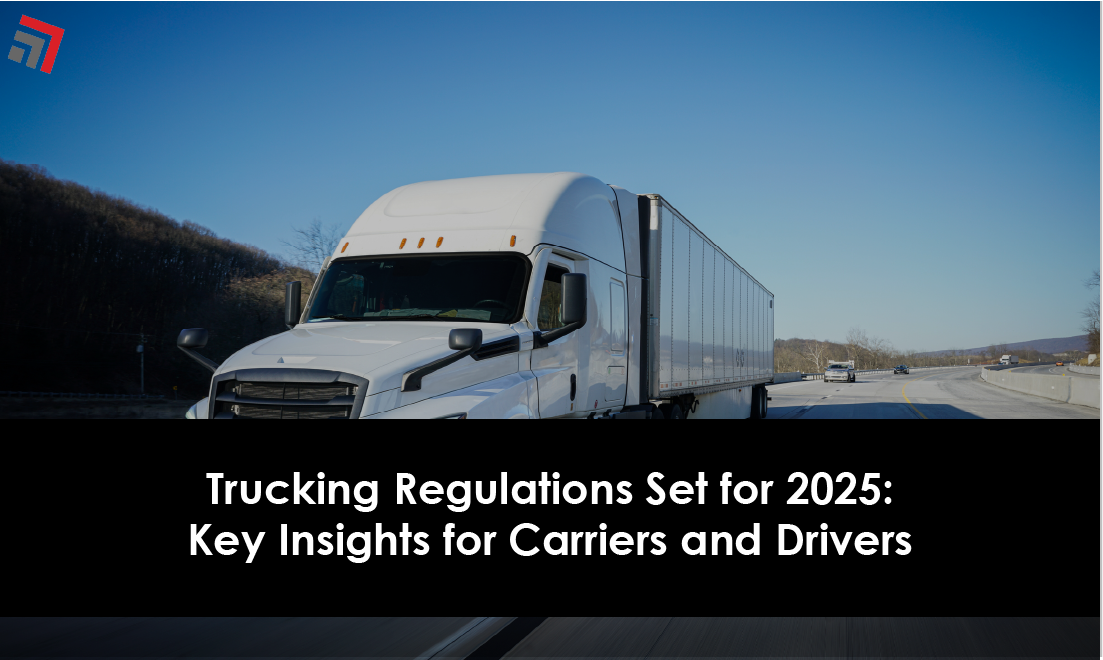The trucking industry is set to undergo major legislative changes in 2025 with the goals of integrating cutting-edge technologies, improving road safety, and advancing sustainability. Both carriers and drivers will be impacted by these changes, which will create difficulties that call for strategic adjustment. Here is a summary of the main rules that will influence the trucking industry and practical advice on how to maintain compliance.
Important Rules to Pay Attention to
1. Systems for Automatic Emergency Braking (AEB)
The National Highway Traffic Safety Administration (NHTSA) and the Federal Motor Carrier Safety Administration (FMCSA) are completing a rule that would require large vehicles to have automatic emergency braking systems. In an emergency, these systems automatically apply the brakes to avoid crashes.
· Timeline for Implementation: By January 2025, a finalized rule should be in place.
· Those Affected: Newly built Class 3–8 trucks (those weighing more than 10,001 pounds) are required to adhere. It will take three to four years to convert existing trucks.
· How to Get Ready:
- To spread the expense, retrofit older trucks with AEB systems as soon as possible.
2. To guarantee optimum use, train drivers on AEB functionality.
2. Mandate for Speed Limiters
In order to increase safety and fuel efficiency, the FMCSA intends to propose a rule requiring heavy-duty trucks to have speed limiters installed.
· Timeline: By May 2025, the Notice of Proposed Rulemaking (NPRM) is anticipated.
· Possible Effect: Delivery timings may be impacted by longer travel durations caused by lowered speed limits.
· How to Get Ready:
- Keep an eye on rule revisions and evaluate how they affect operations.
2. To find logistical changes, test speed restriction technology on a few vehicles.
3. Compliance with Drug and Alcohol Clearinghouses
Stricter rules mandate that states cancel Commercial Driver’s Licenses (CDLs) for drivers with drug or alcohol infractions listed in the FMCSA’s Clearinghouse beginning in November 2024.
· What’s New: In order to get their CDL back, drivers must finish the return-to-duty procedure.
· How to Get Ready:
- To guarantee driver compliance, conduct routine inspections in the clearinghouse.
2. To encourage safety, offer programs for education and support around substance use.
4. The Crash Preventability Determination Program (CPDP), which has been expanded
By adding more crash categories to the CPDP, the FMCSA is enabling carriers to challenge more accident types as unavoidable.
New Categories:
· Collisions brought on by drivers who enter roads incorrectly.
· Collisions brought on by other drivers losing control of their cars.
How to Get Ready:
· Examine and properly record previous incidents.
· Invest in dashboard cams to offer unambiguous proof when submitting disputes.
5. Standards for Fuel Efficiency
In order to lower emissions and operational expenses, the NHTSA intends to propose revised fuel efficiency standards for medium- and heavy-duty vehicles.
· Timeline: June 2025 is when NPRM is anticipated.
· How to Get Ready:
- Examine fleet improvements that support fuel economy objectives.
2. Take into account rewards for implementing greener technologies.
Implications of These Modifications for Small Fleets
These rules may place an undue financial strain on small fleet owners, especially when retrofitting and technology improvements are involved. Long-term advantages of these modifications include better
safety records, possible insurance savings, and reduced operating expenses as a result of higher fuel efficiency.
How to Stay Ahead
1. Keep Up: To anticipate changes, keep an eye on industry news and FMCSA updates on a regular basis.
2. Proactive Planning: Create a staged strategy for putting necessary upgrades and compliance measures into place.
3. Leverage Incentives: Look into grants or subsidies that could help defray expenses, particularly for improvements in safety and fuel economy.
4. Involve Drivers: Include training courses to acquaint drivers with new rules and technology.
5. Keep a Record of Everything: To protect your fleet from any fines, keep well-organized records of maintenance, accidents, and compliance initiatives.
In Conclusion
With new regulations aimed at encouraging efficiency, safety, and environmental responsibility, the trucking sector is about to begin a significant year. Although these changes might seem overwhelming at first, carriers and drivers can set themselves up for success if they prepare ahead of time. The industry as a whole may advance toward a more secure and sustainable future by embracing these changes.




Recent Comments